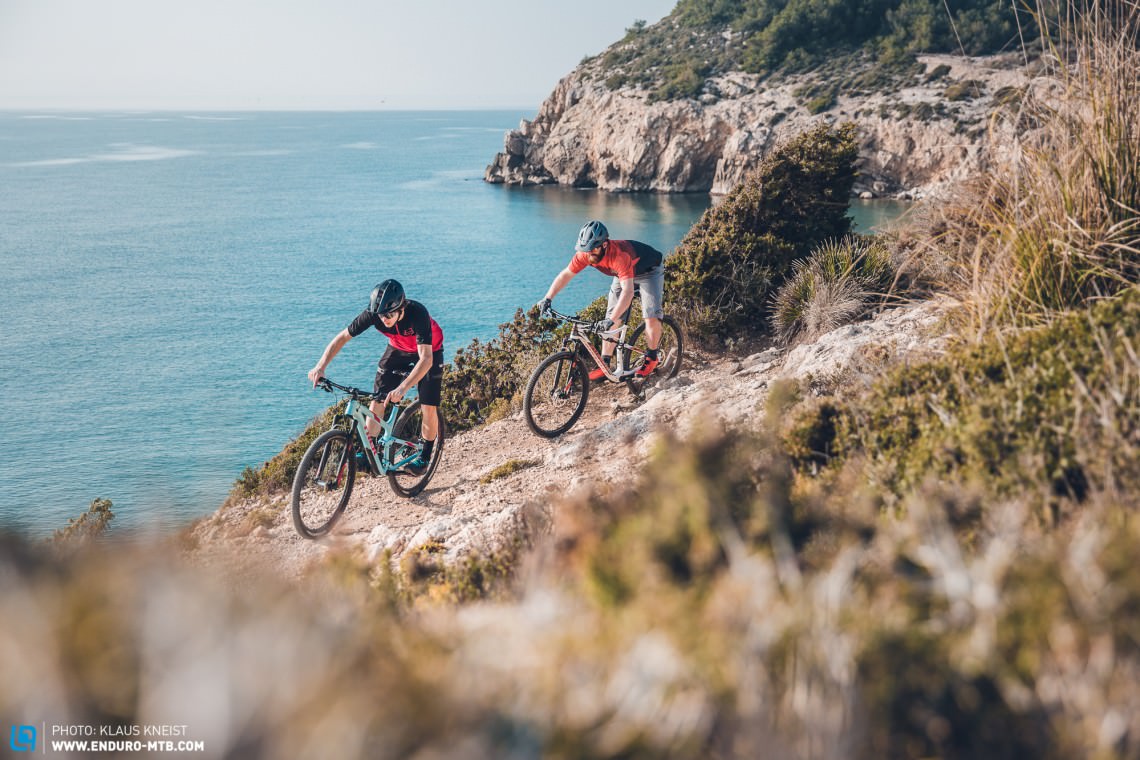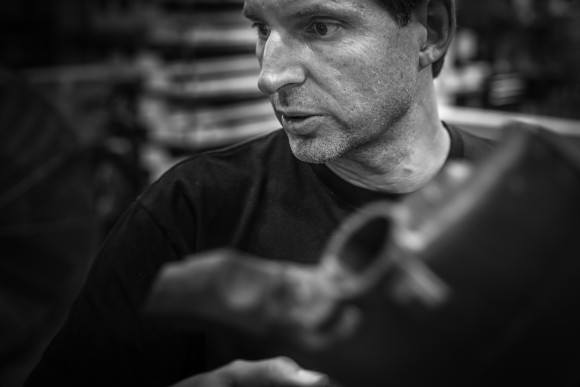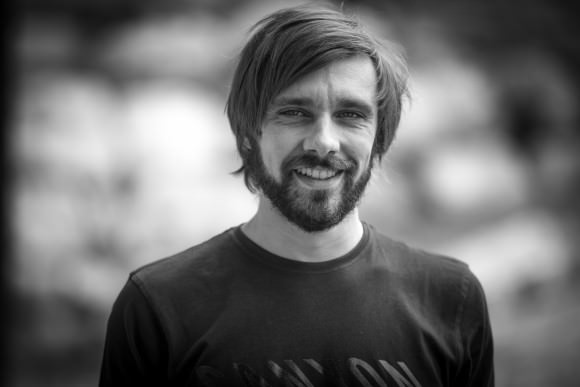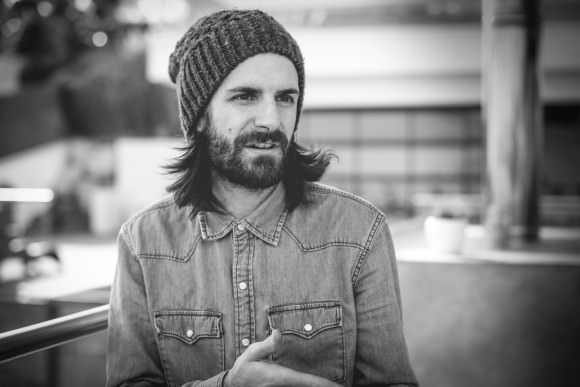What XC bikes will we ride in the future?

What XC bikes will we ride in the future? That’s a question every rider thinks about and in the course of our XC bikes group test we wanted to dig a little deeper. We ask six industry experts about their opinions regarding the design of upcoming XC bikes.
The Question
The geometry of enduro bikes has changed a lot in the last few years: longer front triangles, slacker head angles, shorter chainstays, etc. Now we see more and more trail bikes with this type of geometry too. Do you think that the geometry of XC bikes will follow this trend in the future, and is the current classic XC geometry with steep head angles and long stems holding back development?

Fabian Scholz Design Engineer FOCUS Bikes
Unlike new developments such as enduro bikes, it’s always going to be harder to shake up fixed ideas about XC bikes. I don’t think developments are necessarily slower when it comes to XC bikes, but there are just different issues to consider. Cross-country races are usually won on the climbs, which is where traction and the climbing capabilities of the bike are what count. This is why you wouldn’t expect to see ultra-short rear ends. Stems have become way shorter in the past few years, but this is down to weight distribution on the climbs, which is much worse with a 50 mm stem. The courses are getting more and more challenging, so lots of riders are choosing to ride fullys so that they’re able to conserve power on technical sections. An XC race is much shorter than an enduro ride or race, so your riding position can be a lot more aggressively positioned. If your upper body gets tired, then it’s not as much of a big deal as it might be on a trail bike. I don’t think that purebred XC bikes will see many changes to their set-ups as riders tend to be pretty fixed and like to rely on what works. Bikes for customers are going to profit from the latest developments, though, be it a dropper post, shorter stem, or modern geometry.
 [emaillocker id=132050]
[emaillocker id=132050]
Israel RomeroMondraker Global Communications and Product development
For us at Mondraker, as you can imagine, proper geometry is something we’ve developed very carefully, especially for the last few years. Developed since 2011, Forward Geometry was introduced in our model year 2013 collection, setting the trend for the – let’s say – modern geometry mountain bikes introduced globally in the last couple of years. Mondraker was the pioneer brand, especially on longer front-centers and reducing stem lengths, the basis of the concept. At Mondraker, Forward Geometry is present on all our platforms, from trail bikes to DH, full suspension, and hardtail bikes. But what about XC? Our hardtail Vantage is a Forward Geometry bike, even with Plus and e-Vantage Plus versions, and features a 140 mm fork that makes it a more aggressive all-mountain hardtail. Even our Panzer fatbike is Forward Geometry, and is certainly the most special fatbike in the market… even the e-Panzer R is Forward Geometry. But our XC-Race Chrono Carbon and Podium Carbon bikes are not Forward Geometry. We’ve been seeing some other brands’ XC race bikes going progressively longer, with slightly shorter stems, slacker head angles, and the shortest possible chainstay lengths in the last couple of years, but going even longer on the top tube paired with really short stems such as our proprietary FG30 mm stem.. would it make sense for XC racing? Probably yes, maybe for open-minded riders like you guys and us… But would the market accept this? Would XC riders accept it? Would we sell as many XC bikes as we currently sell today? It would possibly be “cool,” but possibly “too innovative” as well for the – let’s say – more classic and “less progressive” (we would not say it’s less innovative) category XC racing is. So, answering the question, we believe that yes, XC race bikes will follow this trend, but in a less extreme way… not going super-long, nor super-slack, but adopting shorter stems that improve the overall ride and handling. What about road bikes? Possibly a similar approach to XC race bikes would be a great update for this classic market too… who knows?

Chris Cocalis CEO Pivot Cycles
I think that we have adapted to part of the trend with bikes like the Mach 4, but also with our LES 29 Hardtail, LES 27.5, and the 429SL. When we designed all of these bikes, we were focused on shorter chainstays and slacker head angles than their previous generations. When we launched the LES 29 three years ago, those looking at only the geometry charts questioned the relatively slack (for an XC bike) head angle, as it did not fall within the norm. However, now we are seeing more companies show their “new geometry” bikes that follow this path more closely. XC bikes have become more versatile because of this. It is our experience that when done correctly, the bike is actually faster around the race course because it doesn’t give up anything in terms of handling or climbing, but is far more stable on the descents. In terms of longer front triangles, the 29er movement helped to lengthen front triangles considerably. However, I don’t see a big trend to push these numbers out to where the trail and enduro segment is going with really long front-center/reach measurements. This is great for the pro-level enduro bikes, where the balance has really shifted to the descending end of the spectrum. On XC bikes, it’s still important to keep the overall wheelbase length from growing too much as riders need to have a different position on the bike when climbing, navigating tight uphill corners, and sprinting. Overall, Pivot’s focus on all our XC product has been to develop models that not only get the rider around the race course the fastest, but also make for a more versatile bike that can be confidently ridden across a wider range of terrain.

Chris PorterCEO Mojo Suspension / Mastermind
XC bikes and XC technology are not necessarily driven by the quest for speed and performance, they seem to be driven solely by the desire to make the lightest bike. In my mind, XC competition should be a race to find the fastest rider and bike, not a weighing competition!
With this in mind, it’s no wonder XC geometry is so conservative!
It seems clear to me that a bike that handles better would allow an XC racer to go faster for all of the flat parts of the track and all of the descents. This would be ‘free time,’ an easy way to go faster with no extra training required!
It’s also clear to me that a slack seat angle isn’t really efficient…. If the rider’s seat could be in the correct position in relation to the cranks and the rider’s body could be at the correct angle in relation to saddle and cranks, then the rider could produce power more efficiently. If these angles were to take into account the average climb angle for a particular race, then again the rider would certainly be quicker for less fatigue.
If the rear axle position was arranged to be far enough behind the rider’s seated position on a steep climb then the XC racer could stay seated instead of riding on the nose of the saddle or running with the bike. Surely a bike like this would be more efficient?
A bike like this would have a wheelbase long enough to accommodate the correct relationship between wheels and the rider’s ‘attack’ (out of saddle) position for good handling. A bike like this would also have enough room to get the seated rider in the correct position totally independently of the standing position (and thus would require a dropper post!).
In summary:
Handling geometry = relationship between wheels, BB height, head angle, and bar position.
Pedalling/climbing efficiency = relationship between crank, saddle, and rear axle.
The two things can be separated… IF the bike is big enough!
A bike like this would be faster over the XC course, but would also be heavier, so no XC racer would ride it! Insane!

Daniel Oster Product Manager / Brand Manager MTB Canyon
XC courses are more technical than they were in the past. Short and steep climbs, as well as rough descents, require a modern geometry – so in the future I think we’re going to see longer XC bikes. A longer front center would help to keep the front wheel on the ground in steeper uphill sections, as well as provide more control during descents. In order to not sacrifice agility, it would make sense to shorten the stems and ride wider handlebars for more control. This is a growing trend that we have seen in all disciplines in the last few years, including XC.
To create a bike with a short cockpit, an efficient pedaling position with a steep seat angle, and a long front center, the stem and reach will have to change. Chainstays could be shortened a little without the rider losing centralized position on the bike. I expect head angles will be a little more slack as well. There for sure is not one geometry that is perfect for everything, but in general I think all bikes will continue to evolve in this direction.
One thing worth keeping in mind is that there is even a difference between XC and XC Marathon due to the style and length of the courses, as well as time spent in the saddle. Right now there is room to make XC bikes a bit more agile and ready to handle more difficult descents, while XC Marathon bikes still need to be more focused on efficiency over the course of high mileage. In the end, a playful bike with a low, centralized position makes sense for all kinds of mountain biking because it gives you more control, makes you faster, and most importantly – is a lot of fun to ride.

Cesar Rojo CEO Cero / Engineer / Mastermind
For sure! I am totally thinking this is the way for any bike, the actual XC geometries date from the 80s and no one has done anything to change them…. Now an XC bike has only one advantage against any other bike, and that is the weight; other than that everything about an XC bike is much worse than the other types. It climbs really badly, the steep head angle make it super-unstable, so it’s hard to keep the line in slow tech climbs, and long chainstays give crap grip… I mean, I only see the weight advantage. And going down, what can I say, is there a single person in the world that would choose an XC frame over a trail or enduro bike to descend a trail ? I believe there is not a single person, and if there is, he or she probably hasn’t tried a trail or enduro bike.
With a slacker head angle, lower handlebar, shorter chainstays, and shorter stem, bikes will get so much better in all terms, and if you keep the weight low… voila, you have the best XC bike ever! Luckily for some people I’ve been testing that bike for over a year, so look around as soon you will have an XC frame available and capable of making KOM’s on climbs (this is assumed) and descending trail segments.
Our Perspective
From our perspective, there is a big need for new geometry concepts for XC bikes. Most of the current bikes are designed for World Cup athletes and don’t fit the needs of regular riders. As you can already see in our XC bikes group test, slacker head angles, longer main frames, and shorter chainstays improve the ride of XC bikes, offering more fun, more stability, and thus a more enjoyable ride overall! We are really excited to see when the first pro riders open their minds and see the benefits as well.
Then the whole evolution will go even faster – and we can’t wait for the next generation of bikes!
Words: Christoph Bayer Photos: Axel Brunst, Jens Staudt, Klaus Kneist and others
Did you enjoy this article? If so, we would be stoked if you decide to support us with a monthly contribution. By becoming a supporter of ENDURO, you will help secure a sustainable future for high-quality mountain bike journalism. Click here to learn more.








